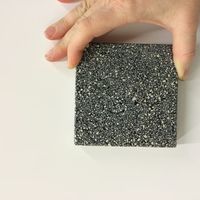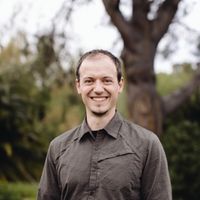They look wonderful. Europeans do all the best things.
April Fools
Award-Winning Homes Capture “Seamless Biophilia Experience”
April 1, 2019

Aksel Lund is the rising star behind the award-winning Lundhjem homes.
Photo: Malta PølenuWe reached rising star Aksel Lund, the architect behind Lundhjem, at his Copenhagen office to discuss the award.
“Forget tiny house”
“I have no surprise,” Lund told BuildingGreen. “The immersive experience of a Lundhjem is unlike what anyone else is doing in architecture today.”
Another trend coming out of Denmark is hygge, the hard-to-translate sense of well-being that comes from a feeling of coziness, but Lund vehemently distanced himself from that term. “Hygge is yesterday!” he exclaimed. “Hygge is a feel-good patina that is really a fleeing from nature.” Instead, he compared his work to the Japanese concept of shinrin-yoku, or “forest bathing.”
Lundhjem homes have more going for them than biophilia, though. We asked Lund if he feels any synergy with the “tiny house” movement because of the ultra-light footprint of his designs. “Forget tiny house,” he replied. “Tiny house is so much trash. What we need is greater and greater dematerialization.” He added that Lundhjem homes can “expand and contract with you and your needs minute by minute” but admitted that “sometimes it haunts me that even Lundhjem may not be radical enough.”
Lund did have favorable things to say about resilience, however, claiming that homes designed by him “are breaking new ground in resilience. I have a uniquely sustainable HVAC system, which is just like feeling a true natural breeze across the face. Lundhjem heating, cooling, and lighting do not rely on the grid or on any fossil fuels.” He added that the homes have been tested for high winds, snow loads, and flooding, “with no damage whatsoever to the structural integrity.”
Seamless integration
“Its almost as though there are no walls at all,” enthused Gunda Pedersen, new owner of a Lundhjem house. “I definitely feel the health benefits of my connection with nature in my new home.” She noted especially the views of trees all around her as well as the sounds and even tactile sensations of nature. “I wake up to birdsong and the dew on my face every morning.”

The owner of this Lundhjem design praised it for boosting her health and sense of well-being.
Photo: Gunda PedersenRegarding the price tag, which averages out at €890,000 (about $1 million) for a 1,000 ft2 home, Lund was dismissive. “Keep in mind the minimalist approach to materials—which, by the way are 100% non-toxic—and you find that what you pay for in soft costs you make up during construction,” he pointed out. “It is very, very affordable.”
He said the same of his newly launched clothing line, Lundtøj. “It’s highly cheap for what you get—an experience like no other, like you are wearing nothing at all.”
Comments
WW
I notice they even incorporated a landing strip for WonderWoman's plane! Incredible integration of technological solutions and natural design principles.
Thanks for the snort laugh!
So good
So important to laugh at ourselves while doing serious work. In the words of David Brower: "Have fun saving the Earth, or you're just going to depress yourself and no one will want to join you." Or another Browerism: "Never forget Rule Number 6." "What is Rule Number Six?" "Never take yourself too seriously." "What are the other Rules?" "There are no other rules."






Add new comment
To post a comment, you need to register for a BuildingGreen Basic membership (free) or login to your existing profile.